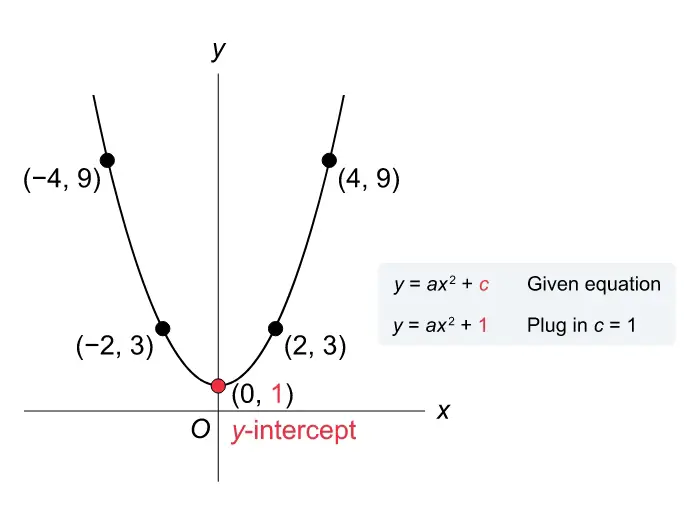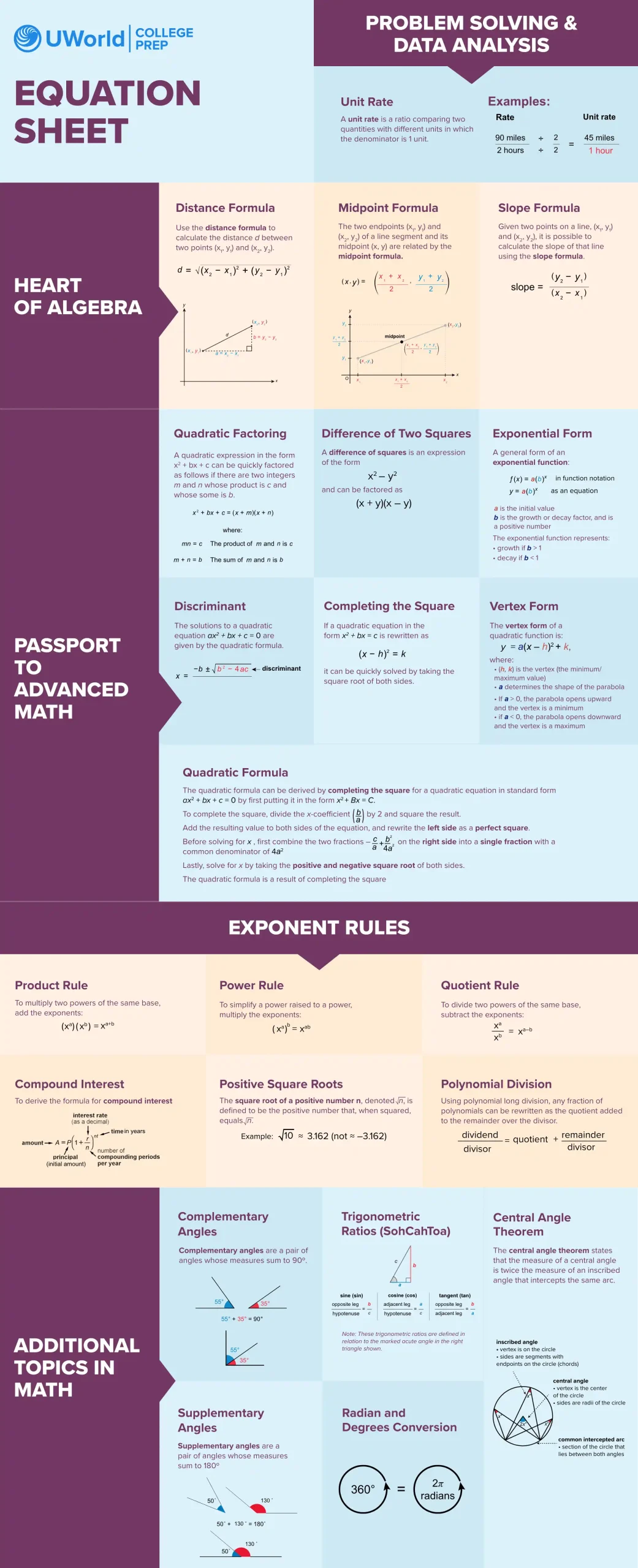SAT® Math Equations and Formula Sheet
The SAT® math section contributes 50% to your overall SAT score. Due to the objective nature of mathematics, it is widely considered the section with the greatest potential for improvement. Achieving a high math score requires the ability to respond accurately to each type of SAT math question. To do this, you need to be able to look at a question and know which formula or equation it's asking you to utilize.
In this outline, we'll go over the formulas most relevant to the SAT math sections, including those in the equation sheet provided during the exam. Additionally, we will discuss essential formulas not included in the reference sheet but crucial for creating your own SAT math quick study guide.
What Is the SAT Math Formula Sheet?
The SAT math sections cover a wide range of topics, resulting in varying formulas being relevant for each test. To ensure you're comfortable with any formula you might need on exam day, it is crucial to practice extensively with SAT-like questions accompanied by comprehensive explanations and illustrations, such as those found in UWorld's SAT Qbank. As you practice, incorporate unfamiliar formulas into your repertoire.Doing so will expand your knowledge and proficiency across the wide range of topics that might appear on the exam. Additionally, take the opportunity to thoroughly explore how these formulas are applied in different problem-solving scenarios. This deep dive into their practical applications will enhance your understanding and ensure you are well-prepared for the exam.
The SAT math formula reference sheet focuses heavily on geometric equations, including:
- Area formulas for circles, triangles, and rectangles.
- The circumference formula for circles.
- Side relationships specific to right triangles, such as the Pythagorean theorem.
- Volume formulas for prisms, cylinders, cones, pyramids, and spheres.
- Relationships between angles in circles or triangles, such as the fact that the sum of a triangle's angles always equals 180 degrees.
However, certain additional formulas appear frequently enough on the test to warrant mastery. We’ve prepared a formula sheet that organizes these highly relevant formulas into the four main topics covered in the SAT math section: Heart of Algebra, Problem Solving and Data Analysis, Passport to Advanced Math, and Additional Topics in Math.
List of Formulas
Critical SAT Math formulas to memorize
In addition to the geometrical formulas provided in the SAT math reference sheet, the following equations come up on almost every administration of the exam.
- Percent: x percent of some number (n) is determined by the product n(x/100)
- The Mean of a range of values is equal to the quotient of their sum and the number of values.
- The probability of an event(e.g., selecting one colored marble from a bag of differently colored marbles) is equal to the quotient of the number of desired outcomes and the total number of possible outcomes.
-
The quadratic formula states that, given ax^2 + bx + c = 0, x is equal to the quotient
X = -b ± √b2-4ac / 2a - The equation of any given line uses the form y = mx + b, wherein m represents the line's slope and b represents its y-intercept.
- The slope of any given line is equal to the quotient of the difference in y-values by the difference in x-values between any two points on that line, often presented as (y2-y1)/(x2-x1).
- The distance between any two points on a graph can be determined by using the Pythagorean theorem to derive the distance formula, √(x2-x1)2 + (y2-y1)2
- Arc length is proportional to the degree measure of the angle, such that
arc length = (2πr) ( degree measure from the center / 360 ) because the relationship between arc length and the angle is equal to the relationship between circumference and and the angle of the full circle (360 degrees).

Frequently Answered Questions (FAQs)
Is there a formula sheet for SAT Math?
Do you have to memorize formulas for the SAT Math?
While you will have reference sheets for the SAT math section, many critical formulas are not included (see our list above). To get a high math score, you need to memorize and understand how to apply at least a few omitted formulas.
That said, almost all relevant formulas are taught as part of standard Algebra and Geometry coursework, so you are likely familiar with them already. If you’re unfamiliar with some formulas, the most effective way to learn them is to utilize them in practice problems. After repeatedly practicing the application of the formula, you’ll intuitively know how and when to use it.
Pro tip: Using UWorld’s QBank, you can select question topics that use specific formulas so you master how to apply any concept.
What formulas are given on the math portion of the SAT?
- the area of circles, triangles, and rectangles
- the circumference of a circle
- the side relationships of right triangles (e.g., the Pythagorean theorem)
- the volumes of prisms, cylinders, cones, pyramids, and spheres
- the relationship between angles in a circle or triangle (e.g., that the sum of a triangle’s angles is always equal to 180 degrees)
How can I quickly identify the correct formula to use for SAT math problems?
Determining the appropriate formula for an SAT math problem is sometimes immediately apparent from the question itself. For example, a question involving lines and angles will likely test your knowledge of complementary or supplementary angle relationships. Similarly, if a question asks for the number of solutions to a given quadratic equation, it tests your familiarity with the discriminant.
However, many questions could be more complex. Extensive practice and review are crucial to identify the necessary steps to solve a problem quickly. While practicing, assessing your methods for each question, even the ones you answer correctly, is essential. If a question took you longer than a minute to complete, there’s likely a formula that could have expedited your process. Gradually, your approach to all SAT math problems–especially those that rely on formulas–will become more efficient with practice.
